Ascorbic Acid (Vitamin C) Injection
Product Overview
Ascorbic Acid (Vitamin C) Injection is a compounded sterile injectable solution formulated for parenteral administration, designed to deliver high concentrations of vitamin C directly into the bloodstream. This product is available in both preservative-free and preserved formulations, each supplied in a 30 mL vial at a concentration of 500 mg/mL.[1][3]
The active ingredient, ascorbic acid, is a water-soluble vitamin essential for numerous physiological functions, including collagen synthesis, antioxidant defense, and immune support. It is intended for use in clinical settings where oral administration is not feasible or where higher plasma concentrations are desired, such as in cases of severe deficiency, certain infections, or as adjunctive therapy in specific medical protocols.[1][3]
Ascorbic Acid (Vitamin C) Injection should be used only under the supervision of a qualified healthcare professional, and its safety and efficacy for all potential indications have not been evaluated by the U.S. Food and Drug Administration.[1][3]
The ingredients of Ascorbic Acid (Vitamin C) Injection are ascorbic acid as the active ingredient, with water for injection as the vehicle, and, in the preserved formulation, a suitable preservative to maintain sterility and stability during multi-dose use. This product is compounded utilizing corn-free sources to meet the individual needs of patients and is dispensed only with a valid prescription, emphasizing its status as a personalized medication that is not commercially available in standard retail pharmacies.[1][3]
The dosing regimen for Ascorbic Acid (Vitamin C) Injection should be individualized based on the patient’s clinical condition, severity of deficiency, and therapeutic goals.[19][21]
Typical adult doses for the treatment of vitamin C deficiency range from 200 mg to 1 g daily, administered intravenously, with higher doses (up to 100 grams per day) reserved for specific clinical protocols under close supervision.[19][21]
For parenteral administration, the solution should be inspected visually for particulate matter and discoloration prior to use. The injection may be administered slowly via intravenous infusion, as directed by a healthcare professional.[19][21]
Dosage adjustments may be necessary in patients with renal impairment, G6PD deficiency, or other comorbidities.[19][21]
The duration of therapy depends on the indication and patient response; for acute deficiency, treatment may continue until clinical signs resolve and laboratory values normalize. In chronic or adjunctive settings, ongoing monitoring is recommended to avoid toxicity.[19][21]
If a dose is missed, it should be administered as soon as possible, unless it is almost time for the next scheduled dose; in that case, the missed dose should be skipped to avoid doubling up.[19][21]
Ascorbic acid, the sole active ingredient in this injection, exerts its physiological effects primarily through its role as a potent antioxidant and enzymatic cofactor. Upon intravenous administration, ascorbic acid rapidly increases plasma concentrations, bypassing the limitations of gastrointestinal absorption that restrict oral dosing.[4][6]
As an antioxidant, ascorbic acid donates electrons to neutralize reactive oxygen species and free radicals, thereby protecting cellular components from oxidative damage. It also serves as a cofactor for several enzymes involved in the biosynthesis of collagen, carnitine, and neurotransmitters, as well as in the metabolism of tyrosine and peptide hormones.[4][6]
In clinical contexts, high-dose intravenous ascorbic acid may modulate immune function, enhance wound healing, and support endothelial integrity. Its pharmacological effects are dose-dependent and may differ significantly from those observed with dietary or oral supplementation.[4][6]
The direct delivery of ascorbic acid into the bloodstream allows for supraphysiological concentrations, which could have distinct biological effects, such as pro-oxidant activity in the presence of transition metals or selective cytotoxicity against certain malignant cells, although these applications remain under investigation and are not universally accepted as standard of care.[4][6]
The compound’s ability to regenerate other antioxidants, such as vitamin E, and its involvement in iron absorption further illustrate its multifaceted roles in human physiology. The rapid attainment of peak plasma levels with parenteral administration makes this formulation particularly suitable for acute correction of deficiency states or for protocols requiring high systemic exposure.[4][6]
Ascorbic Acid (Vitamin C) Injection is contraindicated in individuals with a known hypersensitivity to ascorbic acid or any component of the formulation.[7][9]
Patients with a history of oxalate nephrolithiasis (kidney stones) or hyperoxaluria should avoid high-dose vitamin C administration, as ascorbic acid is metabolized to oxalate, which may precipitate stone formation or exacerbate renal impairment.[7][9]
Use is also contraindicated in patients with glucose-6-phosphate dehydrogenase (G6PD) deficiency, as high doses of ascorbic acid may induce hemolysis in this population.[7][9]
Caution is advised in individuals with renal insufficiency or those on dialysis, as impaired clearance may increase the risk of accumulation and toxicity.[7][9]
Patients with hemochromatosis or other iron overload disorders should not receive large doses of ascorbic acid, as it can enhance iron absorption and exacerbate tissue deposition.[7][9]
The injection should not be administered to patients with severe hypersensitivity reactions to preservatives, if using the preserved formulation.[7][9]
As with all parenteral medications, administration should be avoided in the presence of local or systemic infection at the injection site.[7][9]
These contraindications are based on known metabolic pathways, clinical case reports, and established pharmacological principles, and are supported by clinical guidelines and expert consensus.[7][9]
Ascorbic Acid (Vitamin C) Injection may interact with several medications and substances, necessitating careful consideration by healthcare providers.[10][12]
High doses of ascorbic acid can increase the absorption of iron from the gastrointestinal tract and may potentiate the effects of oral iron supplementation or exacerbate iron overload in susceptible individuals.[10][12]
It may reduce the efficacy of certain anticoagulants, such as warfarin, by affecting hepatic metabolism or interfering with laboratory monitoring of coagulation parameters.[10][12]
Ascorbic acid can also interfere with some laboratory tests, including glucose measurements, creatinine assays, and occult blood tests, potentially leading to false results.[10][12]
Concomitant use with aluminum-containing antacids may increase aluminum absorption, especially in patients with renal impairment.[10][12]
High-dose ascorbic acid may diminish the therapeutic effects of certain chemotherapeutic agents, such as bortezomib, due to its antioxidant properties. Conversely, it may enhance the renal excretion of some drugs, such as amphetamines and certain tricyclic antidepressants, by acidifying the urine.[10][12]
Patients should inform their healthcare provider of all medications and supplements they are taking to avoid potential interactions.[10][12]
These interactions are supported by pharmacokinetic studies, clinical observations, and drug interaction databases.[10][12]
The administration of Ascorbic Acid (Vitamin C) Injection is generally well tolerated, but adverse effects may occur, particularly at high doses or with prolonged use.[13][15]
Common side effects include local reactions at the injection site, such as pain, swelling, or erythema. Systemic reactions may include gastrointestinal disturbances (nausea, diarrhea, abdominal cramps) when large doses are administered intravenously.[13][15]
Rare but serious side effects include hypersensitivity reactions, such as urticaria, angioedema, or anaphylaxis, which require immediate medical attention. High-dose ascorbic acid may precipitate hemolytic anemia in individuals with G6PD deficiency.[13][15]
There is a risk of oxalate nephropathy or kidney stone formation, particularly in patients with pre-existing renal impairment or those receiving prolonged high-dose therapy.[13][15]
Other rare adverse effects include dizziness, headache, and fatigue. Most side effects are reversible upon discontinuation of therapy, but serious reactions necessitate prompt evaluation and supportive care.[13][15]
The frequency and severity of side effects are influenced by the dose, route of administration, and individual patient factors.[13][15]
The safety of Ascorbic Acid (Vitamin C) Injection during pregnancy and lactation has not been fully established, and its use should be limited to situations where the potential benefits justify the potential risks.[16][18]
Ascorbic acid crosses the placenta and is excreted in breast milk; while normal dietary intake is considered safe, the effects of high-dose parenteral administration are less well studied.[16][18]
Animal studies have not demonstrated teratogenicity, but high doses in pregnancy may theoretically increase the risk of fetal oxalate nephropathy or other metabolic disturbances.[16][18]
There is insufficient evidence to determine the risk of adverse outcomes in human pregnancies, and thus, use during pregnancy should be guided by clinical judgment and individual risk assessment.[16][18]
During lactation, ascorbic acid is excreted in breast milk, and excessive maternal intake could theoretically affect the infant.[16][18]
Healthcare providers should weigh the anticipated benefits against potential risks and consider alternative routes or lower doses when appropriate.[16][18]
Current clinical guidelines recommend caution and individualized decision-making, given the lack of robust safety data for high-dose injectable vitamin C in pregnancy and lactation.[16][18]
Proper storage of Ascorbic Acid (Vitamin C) injection is important to maintain its stability and potency. Upon receiving the medication, it should be stored in a refrigerator at 36°F to 46°F (2°C to 8°C). Keep the vials refrigerated when not in use, and do not allow them to freeze. If a vial does accidentally freeze, it should be discarded, as freezing can degrade the peptide. The medication can be kept at room temperature for short periods when preparing an injection, but prolonged exposure to room temperature should be avoided unless specified by the pharmacy.
Light exposure should be minimized, so it’s best to store the vials in their original carton or in an opaque container in the fridge. Keep all medications out of reach of children and pets, preferably in a designated medication area. Before each use, inspect the vial: the solution should be clear and colorless (or slightly pale yellow). If you notice particles, cloudiness, or discoloration, do not use that vial and contact the pharmacy for guidance.
After puncturing the rubber stopper for the first dose, the vial becomes a multi-dose container. Use a new sterile needle and syringe for each withdrawal to maintain sterility. It is recommended to discard any unused portion 28 days after first puncture or by the beyond-use date (BUD) indicated on the label, whichever comes first. This 28-day rule helps ensure the medication remains effective and uncontaminated. Mark the date of first use on the vial as a reminder. Never “stretch” the use of a vial beyond the advised period.
When disposing of unused medication or expired vials, do not flush them down the toilet or pour them into drains. Instead, follow local guidelines for medication disposal; many pharmacies have take-back programs or specific instructions for safe disposal of injectables. Used needles and syringes should be placed in a FDA-cleared sharps disposal container (puncture-proof) rather than in household trash, to prevent needle-stick injuries.
In summary, store ascorbic acid (Vitamin C) injection in the refrigerator, protect it from light and freezing, and observe the 28-day use window after opening. Proper storage and disposal not only ensure the medication’s effectiveness but also safety for those in the household.
- Levine, M., Rumsey, S. C., Daruwala, R., Park, J. B., & Wang, Y. (1999). Criteria and recommendations for vitamin C intake. *JAMA*, 281(15), 1415-1423. https://doi.org/10.1001/jama.281.15.1415
- Jacob, R. A. (1999). Vitamin C. In M. E. Shils, J. A. Olson, M. Shike, & A. C. Ross (Eds.), *Modern Nutrition in Health and Disease* (9th ed., pp. 467-482). Lippincott Williams & Wilkins.
- Padayatty, S. J., & Levine, M. (2016). Vitamin C: The known and the unknown and Goldilocks. *Oral Diseases*, 22(6), 463-493. https://doi.org/10.1111/odi.12446
- Carr, A. C., & Vissers, M. C. (2013). Synthetic or food-derived vitamin C-are they equally bioavailable? *Nutrients*, 5(11), 4284-4304. https://doi.org/10.3390/nu5114284
- Lykkesfeldt, J., & Tveden-Nyborg, P. (2019). The pharmacokinetics of vitamin C. *Nutrients*, 11(10), 2412. https://doi.org/10.3390/nu11102412
- Doskey, C. M., Buranasudja, V., Wagner, B. A., Wilkes, J. G., Du, J., Cullen, J. J., & Buettner, G. R. (2016). Tumor cells have decreased ability to metabolize H2O2: Implications for pharmacologic ascorbate in cancer therapy. *Redox Biology*, 10, 274-284. https://doi.org/10.1016/j.redox.2016.10.010
- Institute of Medicine (US) Panel on Dietary Antioxidants and Related Compounds. (2000). *Dietary Reference Intakes for Vitamin C, Vitamin E, Selenium, and Carotenoids*. National Academies Press (US).
- Kallner, A., Hartmann, D., & Hornig, D. (1986). On the requirements of ascorbic acid in man: Steady-state turnover and body pool in smokers. *American Journal of Clinical Nutrition*, 44(2), 291-296. https://doi.org/10.1093/ajcn/44.2.291
- Thomas, L. D., Elinder, C. G., Tiselius, H. G., Wolk, A., & Åkesson, A. (2013). Ascorbic acid supplements and kidney stone incidence among men: A prospective study. *JAMA Internal Medicine*, 173(5), 386-388. https://doi.org/10.1001/jamainternmed.2013.2296
- Institute for Safe Medication Practices. (2023). Drug interactions with vitamin C. Retrieved May 6, 2025, from https://www.ismp.org/resources/drug-interactions-vitamin-c
- National Institutes of Health, Office of Dietary Supplements. (2023). Vitamin C: Fact sheet for health professionals. Retrieved May 6, 2025, from https://ods.od.nih.gov/factsheets/VitaminC-HealthProfessional/
- Sesso, H. D., Buring, J. E., Christen, W. G., Kurth, T., Belanger, C., MacFadyen, J., … & Gaziano, J. M. (2008). Vitamins E and C in the prevention of cardiovascular disease in men: The Physicians’ Health Study II randomized controlled trial. *JAMA*, 300(18), 2123-2133. https://doi.org/10.1001/jama.2008.600
- Hemilä, H. (2017). Vitamin C and infections. *Nutrients*, 9(4), 339. https://doi.org/10.3390/nu9040339
- U.S. National Library of Medicine. (2023). Ascorbic acid injection: MedlinePlus drug information. Retrieved May 6, 2025, from https://medlineplus.gov/druginfo/meds/a682613.html
- Institute for Safe Medication Practices. (2023). Adverse effects of high-dose vitamin C. Retrieved May 6, 2025, from https://www.ismp.org/resources/adverse-effects-high-dose-vitamin-c
- Briggs, G. G., Freeman, R. K., & Yaffe, S. J. (2017). *Drugs in Pregnancy and Lactation* (11th ed.). Wolters Kluwer.
- National Institutes of Health, Office of Dietary Supplements. (2023). Vitamin C and pregnancy. Retrieved May 6, 2025, from https://ods.od.nih.gov/factsheets/VitaminC-Consumer/
- Institute of Medicine (US) Panel on Dietary Antioxidants and Related Compounds. (2000). *Dietary Reference Intakes for Vitamin C, Vitamin E, Selenium, and Carotenoids*. National Academies Press (US).
- World Health Organization. (2023). WHO Model Formulary 2023: Ascorbic acid. Retrieved May 6, 2025, from https://www.who.int/publications/i/item/9789240064894
- U.S. National Library of Medicine. (2023). Ascorbic acid injection: Dosage and administration. Retrieved May 6, 2025, from https://medlineplus.gov/druginfo/meds/a682613.html
- Institute for Safe Medication Practices. (2023). Safe administration of intravenous vitamin C. Retrieved May 6, 2025, from https://www.ismp.org/resources/safe-administration-intravenous-vitamin-c
- United States Pharmacopeia. (2023). USP <797>: Pharmaceutical compounding-sterile preparations. United States Pharmacopeial Convention.
- U.S. National Library of Medicine. (2023). Ascorbic acid injection: Storage and handling. Retrieved May 6, 2025, from https://medlineplus.gov/druginfo/meds/a682613.html
- Institute for Safe Medication Practices. (2023). Storage and disposal of compounded sterile preparations. Retrieved May 6, 2025, from https://www.ismp.org/resources/storage-and-disposal-compounded-sterile-preparations
What is Ascorbic Acid (Vitamin C) Injection used for?
Ascorbic Acid (Vitamin C) Injection is primarily used to treat or prevent vitamin C deficiency in patients unable to take oral supplements, or in clinical situations where higher plasma concentrations are required, such as certain infections, wound healing, or adjunctive therapy in specific protocols.[1][3]
How is this product different from oral vitamin C supplements?
This injectable formulation allows for much higher plasma concentrations of vitamin C, bypassing the limitations of gastrointestinal absorption and providing rapid systemic availability.[4][6]
Who should not use Ascorbic Acid (Vitamin C) Injection?
Individuals with known hypersensitivity to ascorbic acid, those with a history of oxalate kidney stones, G6PD deficiency, iron overload disorders, or severe renal impairment should avoid this product.[7][9]
What are the possible side effects?
Side effects may include local injection site reactions, gastrointestinal disturbances, hypersensitivity reactions, hemolytic anemia in G6PD-deficient patients, and kidney stone formation in susceptible individuals.[13][15]
Is it safe to use during pregnancy or breastfeeding?
Use during pregnancy and lactation should be limited to cases where the benefits outweigh the risks, as high-dose parenteral administration has not been fully studied in these populations.[16][18]
How should the injection be stored?
Store at room temperature (20-25°C), protected from light and moisture. Do not freeze. Discard any unused portion after the expiration or beyond-use date.[22][24]
Do I need a prescription for this medication?
Yes, Ascorbic Acid (Vitamin C) Injection is a compounded medication available only by prescription from a 503A compounding pharmacy.
Disclaimer: This compounded medication is prepared under section 503A of the U.S. Federal Food, Drug, and Cosmetic Act. Safety and efficacy for this formulation have not been evaluated by the FDA. Therapy should be initiated and monitored only by qualified healthcare professionals.
503A vs 503B
- 503A pharmacies compound products for specific patients whose prescriptions are sent by their healthcare provider.
- 503B outsourcing facilities compound products on a larger scale (bulk amounts) for healthcare providers to have on hand and administer to patients in their offices.
Frequently asked questions
Our team of experts has the answers you're looking for.
A clinical pharmacist cannot recommend a specific doctor. Because we are licensed in all 50 states*, we can accept prescriptions from many licensed prescribers if the prescription is written within their scope of practice and with a valid patient-practitioner relationship.
*Licensing is subject to change.
Each injectable IV product will have the osmolarity listed on the label located on the vial.
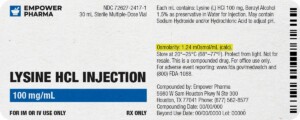
Given the vastness and uniqueness of individualized compounded formulations, it is impossible to list every potential compound we offer. To inquire if we currently carry or can compound your prescription, please fill out the form located on our Contact page or call us at (877) 562-8577.
We source all our medications and active pharmaceutical ingredients from FDA-registered suppliers and manufacturers.

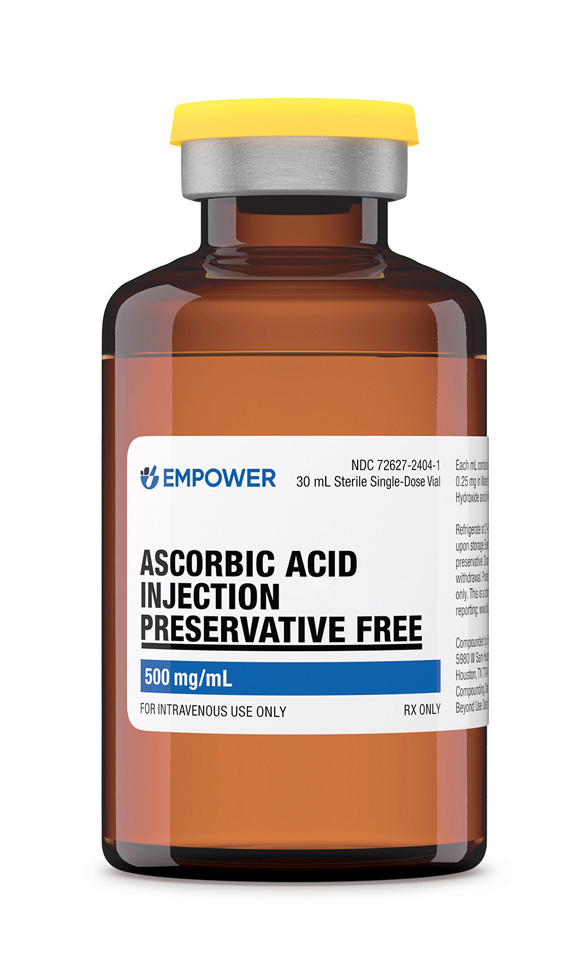
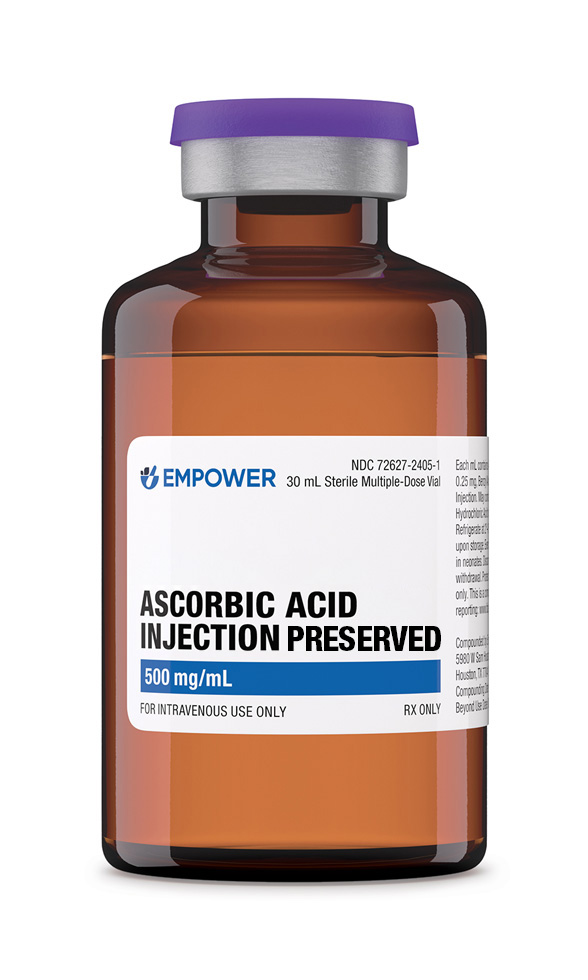
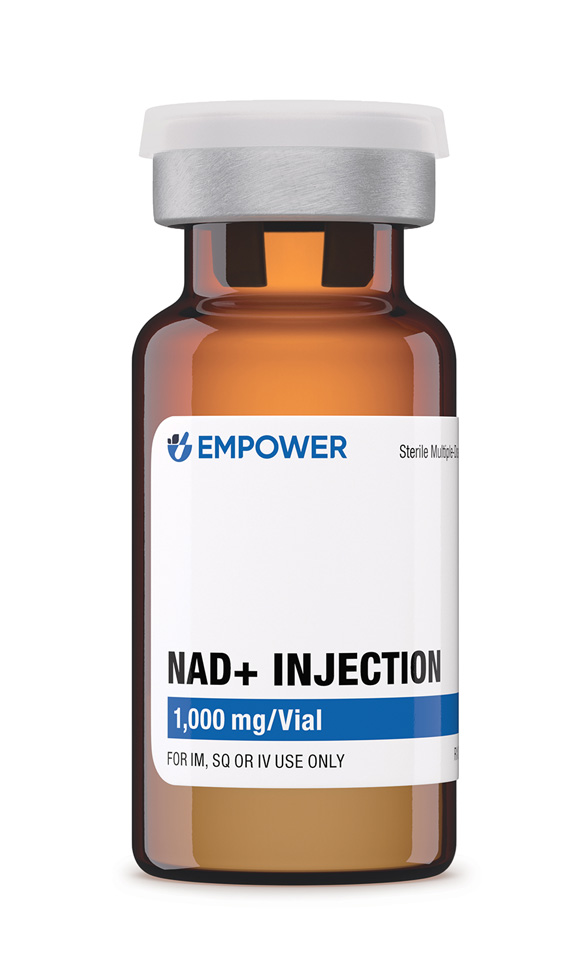 NAD+ Injection (Lyo)
NAD+ Injection (Lyo)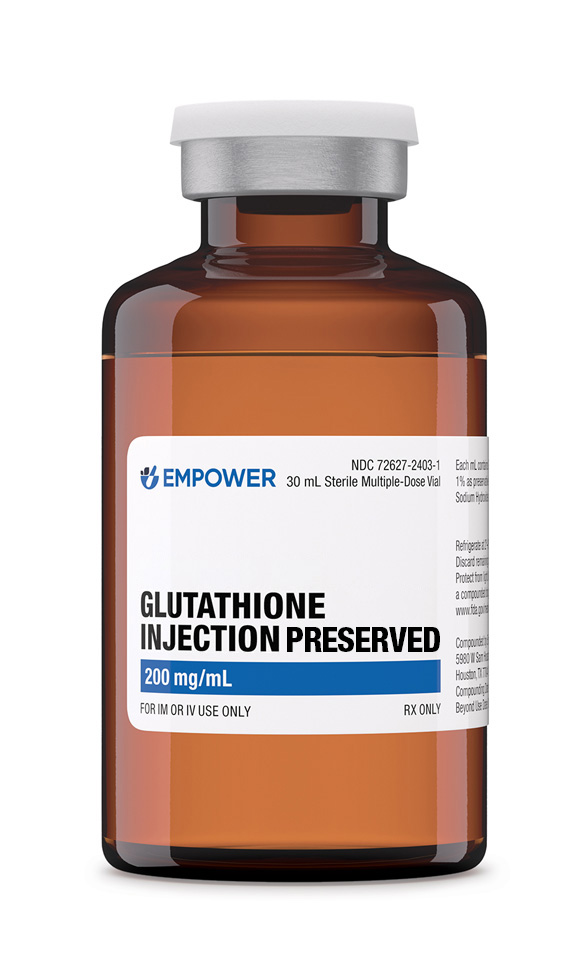 Glutathione Injection
Glutathione Injection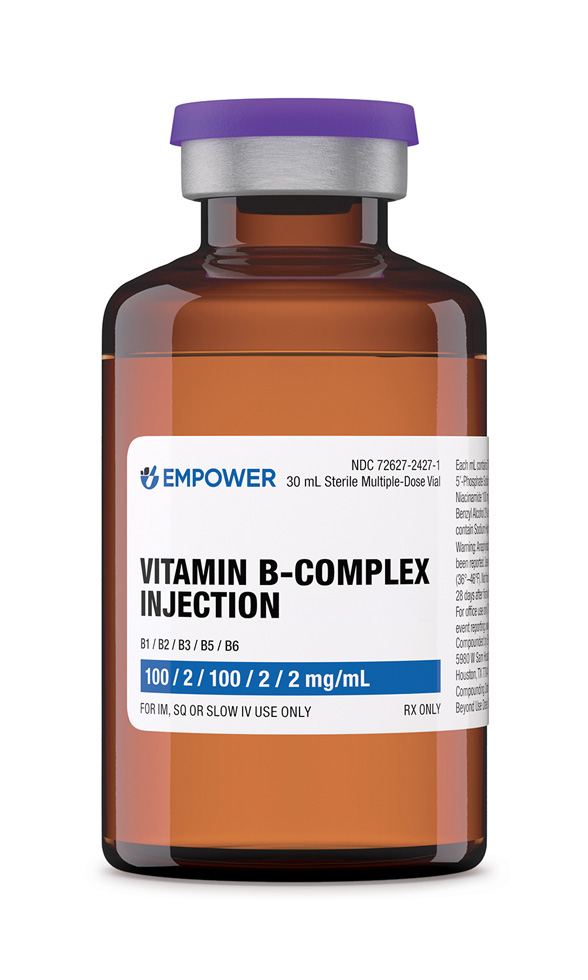 Vitamin B-Complex Injection
Vitamin B-Complex Injection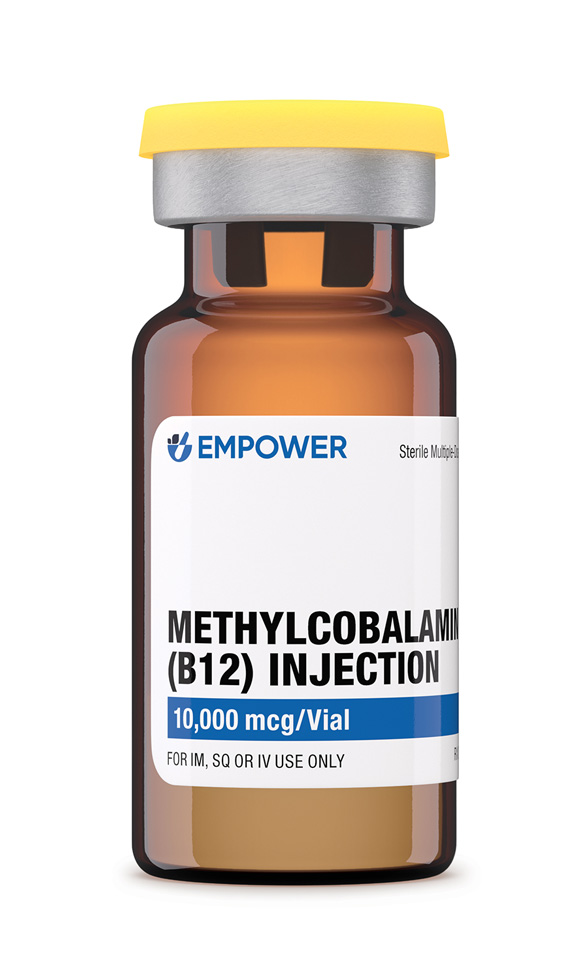 Methylcobalamin Injection (Vitamin B12)
Methylcobalamin Injection (Vitamin B12)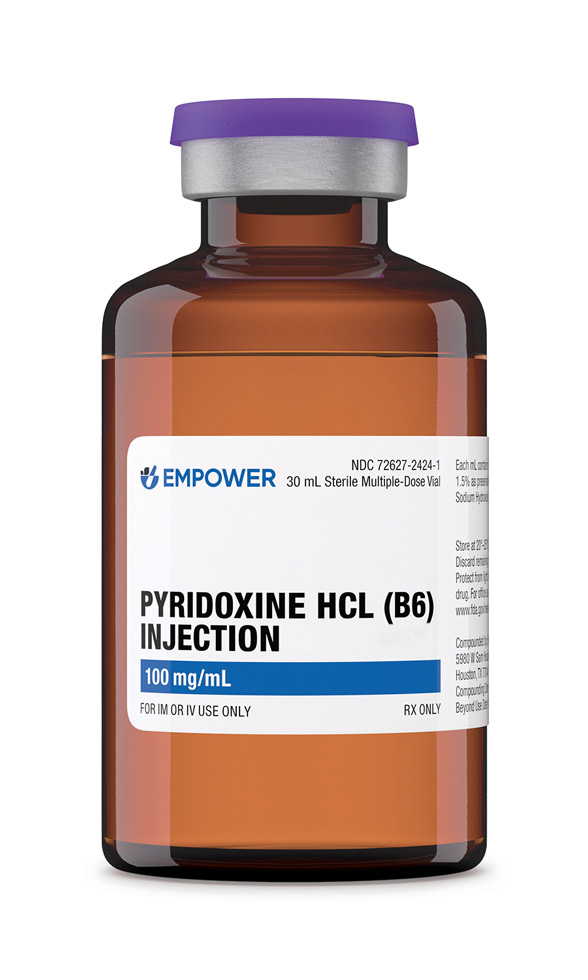 Pyridoxine HCl Injection
Pyridoxine HCl Injection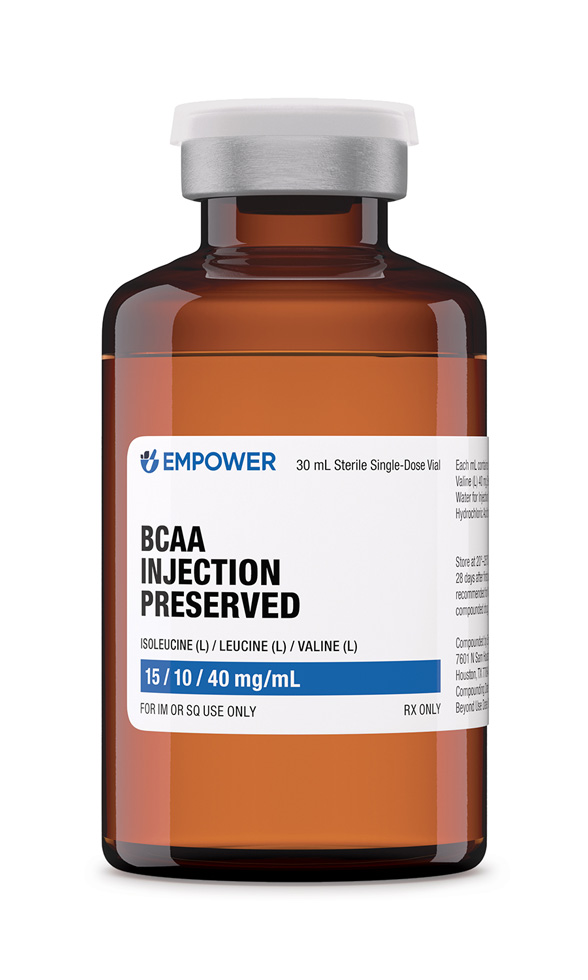 BCAA Injection
BCAA Injection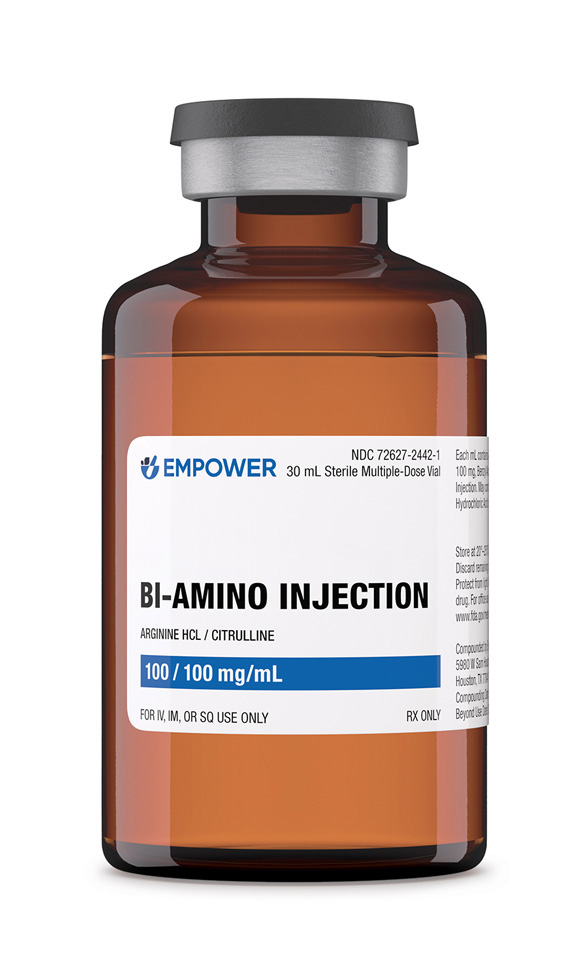 Bi-Amino Injection
Bi-Amino Injection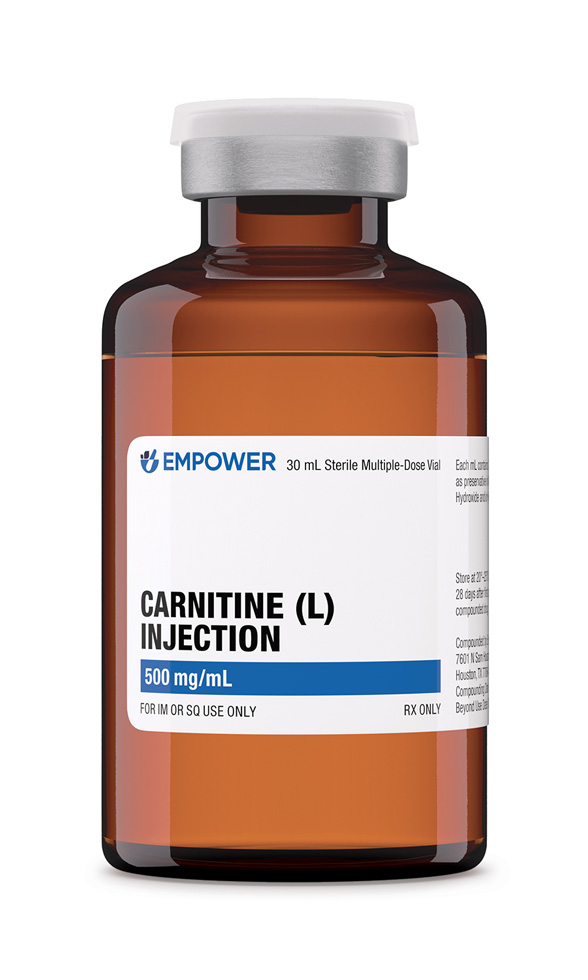 Carnitine (L) Injection
Carnitine (L) Injection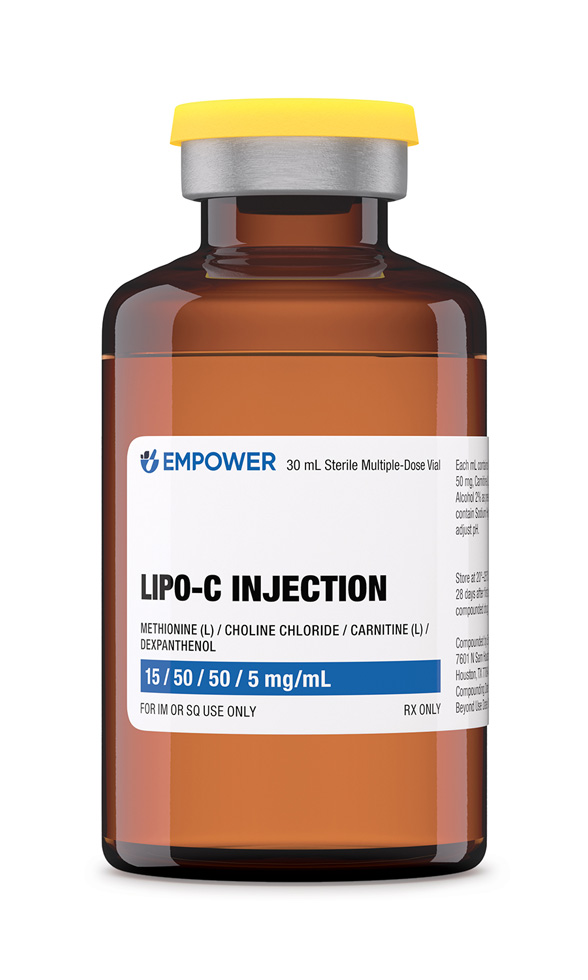 Lipo-C Injection
Lipo-C Injection